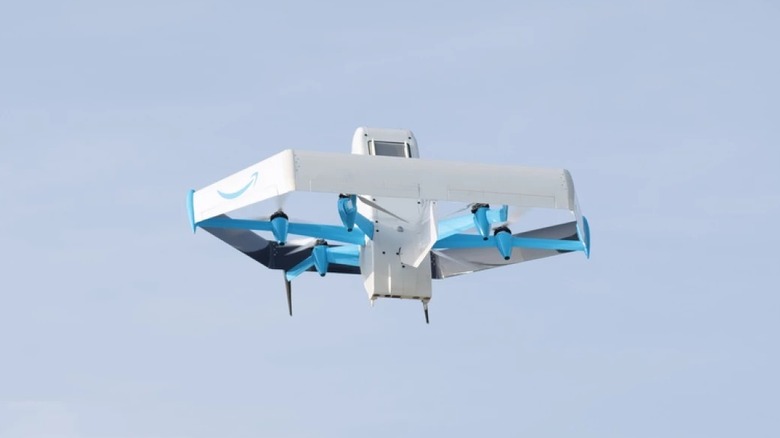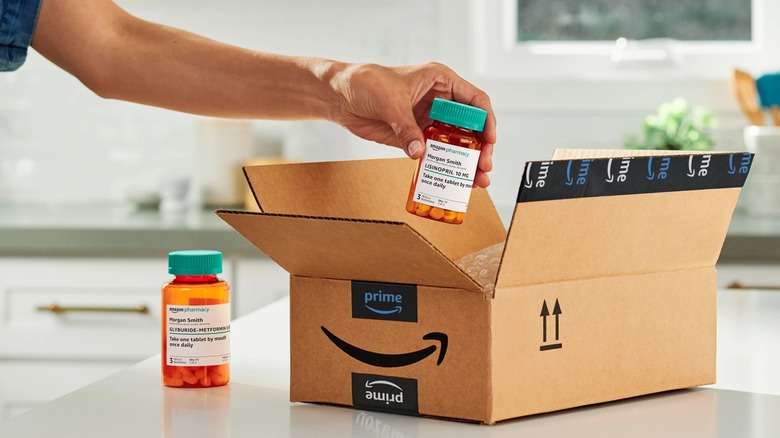Amazon Launches One-Hour Prescription Deliveries Via Drones
A decade since it was first announced in 2013, Amazon's much-hyped drone delivery service — Amazon Prime Air — is still entangled in a mess of regulatory and technical challenges. However, despite these issues, Amazon seems to be pretty bullish about the future of drone-based delivery services. In fact, the company even showcased its redesigned delivery drone for Prime Air back in 2022. A year later, the company announced the rollout of a limited drone delivery service for a select group of Amazon Pharmacy customers in Texas.
In a blog post announcing the launch of this drone delivery service, Amazon confirmed that customers living in the vicinity of College Station, Texas, will now have the option to get over 500 prescription medications airdropped directly at their doorstep within 60 minutes of placing an order. Given the limited periphery of the service, it is evident that this is yet another pilot service to ensure things are in place before the company embarks on a wider rollout. It is also important to note that College Station residents already have access to drone delivery for conventional household orders.
Amazon has also revealed that consumers opting for this drone delivery option can avail of the same at no additional cost over conventional delivery options. For Elgible Amazon Pharmacy customers, it may be interesting to note that they will now have super fast drone delivery access where medications will be home delivered in less than 60 minutes of placing an order.
Amazon Pharmacy drone delivery service: How does it work?
The fact that the drone delivery service for Amazon Pharmacy is connected to the Amazon Prime Air project is evident from the fact that eligible users in the College Station region will need to sign up separately for the service and even complete a yard survey. The service will depend on custom-made Prime Air drones with FAA clearance to fly at an altitude of 40 and 120 meters.
These drones come equipped with various sensors and cameras and feature advanced obstacle avoidance capabilities powered by a neural network trained to identify (and avoid) commonly encountered obstacles. Once the drone with the package reaches the set destination, it uses computer vision to ensure that the landing area is safe and devoid of any interference before lowering itself and releasing the package. Amazon has also confirmed that a pharmacist at the loading station will ensure that all the medications loaded onto the drone are the exact ones that the customer ordered.
There is no denying that the concept of getting stuff delivered via autonomous drones is fascinating. While some of the regulatory challenges that prevented it from taking off have been addressed, several other factors prevent it from becoming the delivery method of choice for logistics companies across the U.S.

